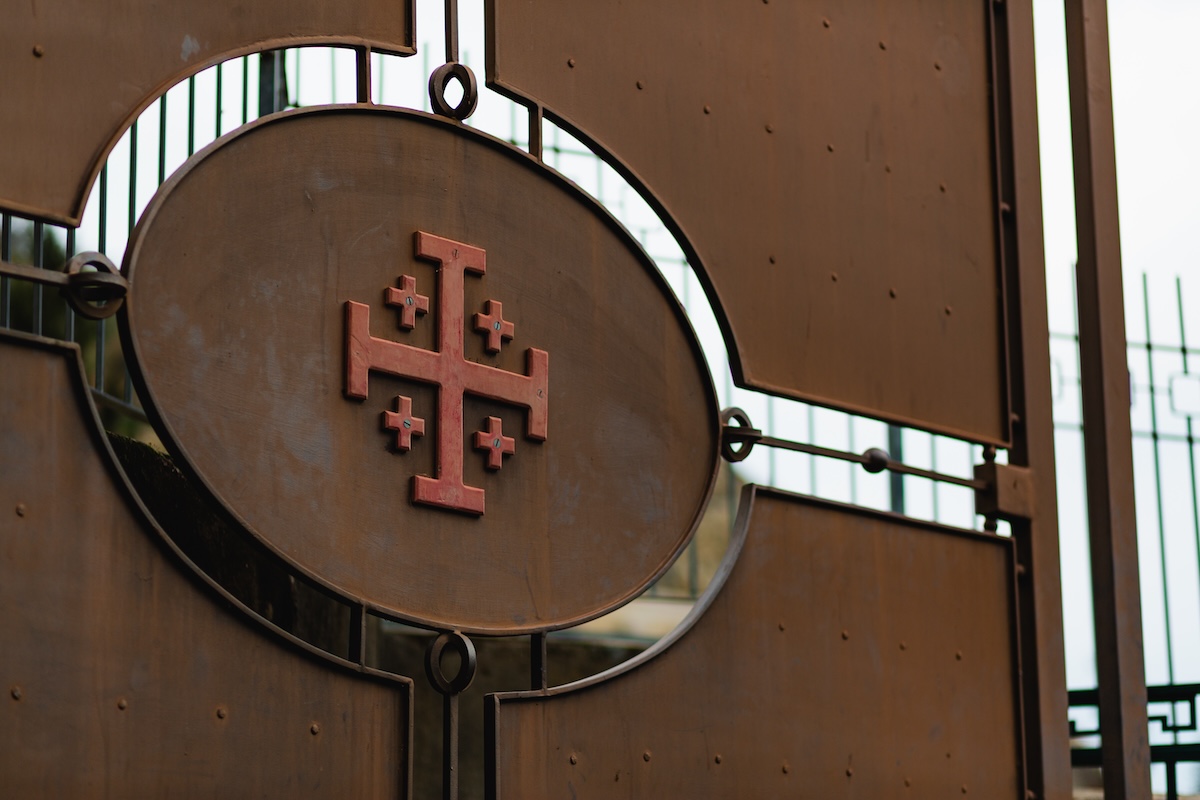Introduction: Where Symbolism Meets Beauty
Few symbols in history carry as much spiritual weight and artistic allure as the Jerusalem crosses. Originating in the heart of the Holy City, this iconic emblem transcends time, geography, and culture. Its bold design—featuring a large central cross surrounded by four smaller ones—has been interpreted in countless ways, from a representation of Christ and the four Gospels to a symbol of global Christian mission.
At the Jerusalem Art Museum, the Jerusalem cross is more than an artifact; it is a living testament to the fusion of faith and creativity. Whether carved in stone, painted on manuscripts, or crafted in precious metals, these crosses illustrate how artistry can illuminate devotion.
In this article, we’ll explore the origins, symbolism, and artistry of Jerusalem crosses, highlighting their enduring place in both religious life and the world of fine art.
The Origins of the Jerusalem Cross
A Symbol Rooted in the Crusades
The Jerusalem cross first rose to prominence in the 11th century during the Crusades. It was adopted as the emblem of the Kingdom of Jerusalem and often adorned shields, flags, and garments. Its bold geometry conveyed both faith and authority, quickly becoming one of the most recognizable Christian symbols of the medieval world.
Interpretations Across Traditions
Over time, the Jerusalem cross acquired layers of meaning. Some traditions view the central cross as Christ and the four smaller crosses as the four Evangelists. Others see it as a symbol of the spread of Christianity to the four corners of the earth. This adaptability has made the cross a universal emblem of mission, devotion, and heritage.
Symbolism That Speaks to Generations
Unity of Faith and Mission
The central theme of the Jerusalem cross is unity. Its symmetrical design conveys harmony between the divine and the earthly, the spiritual and the artistic. It encapsulates the Christian mission to bring light and faith across the globe.
Representation of Sacred Geography
Some interpretations link the design to Jerusalem itself—the spiritual epicenter where heaven and earth meet. The four smaller crosses are seen as markers of the city’s influence radiating outward, affirming its role as the cradle of Christian tradition.
The Artistic Craftsmanship of Jerusalem Crosses
From Stone to Gold: Material Expressions
Artisans through the centuries have found innovative ways to interpret Jerusalem crosses. Medieval stone carvers etched them onto churches and monasteries, while silversmiths and goldsmiths embedded them in intricate jewelry. At the Jerusalem Art Museum, visitors encounter crosses made from precious metals, adorned with enamel, or set with gemstones—each piece reflecting a blend of devotion and creativity.
Byzantine and Medieval Influences
Jerusalem crosses often carry Byzantine artistic influences, characterized by rich color palettes and symmetrical patterns. During the medieval period, Western artisans adapted the design into illuminated manuscripts, frescoes, and reliquaries, ensuring that the symbol transcended both region and era.
Modern Artistic Interpretations
Contemporary artists continue to draw inspiration from Jerusalem crosses. From minimalist interpretations in modern jewelry to large-scale installations in public art, the cross remains a vibrant source of creative exploration. This ongoing reinvention underscores its timeless power as both a sacred and artistic motif.
Jerusalem Crosses in the Jerusalem Art Museum
A Collection Bridging History and Faith
The Jerusalem Art Museum houses an unparalleled collection of Jerusalem crosses that highlight their historical and artistic journey. Each piece tells a story—whether it’s a medieval pendant worn by a pilgrim, a gilded reliquary commissioned by royalty, or a modern reinterpretation by local artisans.
Educational and Spiritual Value
For visitors, these crosses serve as more than objects of beauty. They act as educational tools that bring history alive and as spiritual symbols that invite personal reflection. The museum’s curatorial approach emphasizes the cross as both an artifact of devotion and a masterpiece of craftsmanship.
The Global Appeal of Jerusalem Crosses
Pilgrimage and Souvenirs
For centuries, pilgrims traveling to the Holy Land have brought home Jerusalem crosses as souvenirs and blessings. These small, portable tokens reflect not only personal devotion but also the desire to share Jerusalem’s sacred heritage with the wider world.
Cultural and Ecumenical Significance
The symbol has also transcended denominational boundaries. Today, Jerusalem crosses are embraced by Catholics, Orthodox Christians, and Protestants alike. This universality demonstrates the cross’s unique power to unite diverse communities in shared reverence.
Preserving the Legacy Through Art
Conservation Efforts
The Jerusalem Art Museum plays a vital role in preserving the legacy of Jerusalem crosses. Conservation specialists work diligently to protect delicate enamel work, polish metal craftsmanship, and restore fading colors. These efforts ensure that future generations can continue to experience the artistry and symbolism firsthand.
Inspiring New Generations
Beyond preservation, the museum fosters creativity by encouraging contemporary artists to reinterpret the Jerusalem cross in modern contexts. This dialogue between past and present helps keep the symbol relevant, dynamic, and inspiring.
Conclusion: A Crossroads of Faith and Creativity
The Jerusalem cross is more than a historic emblem—it is a living symbol where faith and art meet in profound harmony. Its enduring appeal lies in its ability to inspire devotion, spark creativity, and unite diverse communities under a shared heritage.
At the Jerusalem Art Museum, Jerusalem crosses invite visitors to reflect on the sacred, to appreciate artistic mastery, and to carry forward a legacy that bridges the spiritual and the aesthetic. Whether encountered in a gilded reliquary or a modern piece of jewelry, the Jerusalem cross continues to speak with timeless eloquence.
For those seeking to understand the intersection of devotion and artistry, few symbols capture that union as powerfully as the Jerusalem cross. It is both a relic of history and a beacon for the future—a testament that faith and art are inseparable threads in the fabric of human expression.
